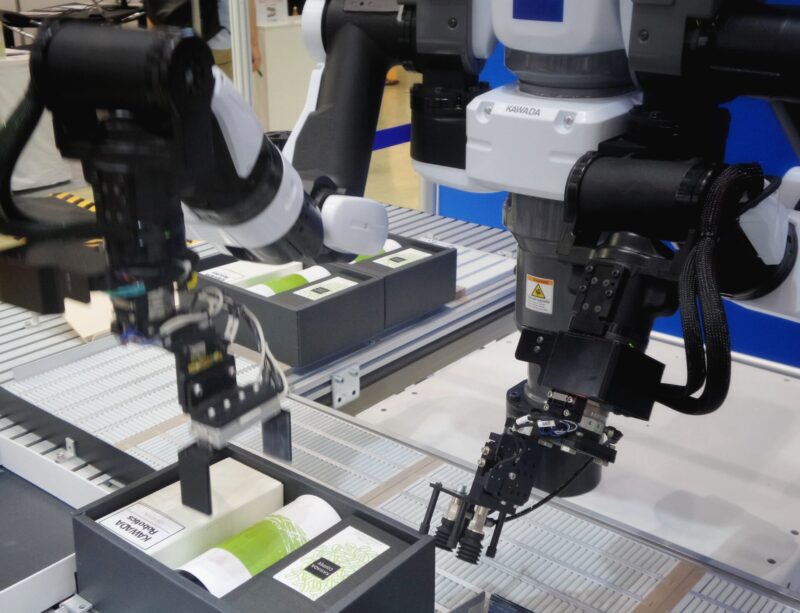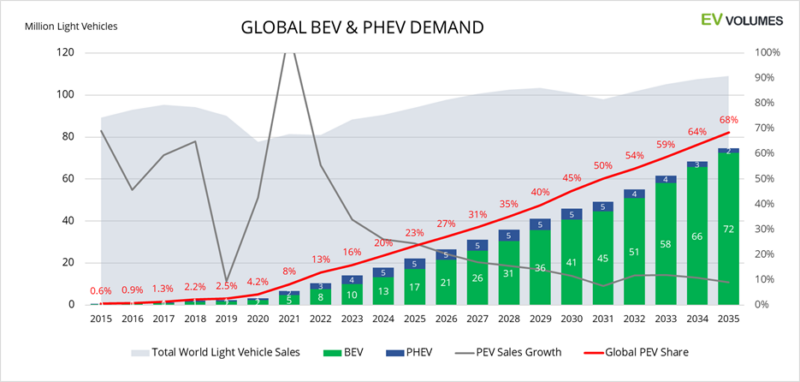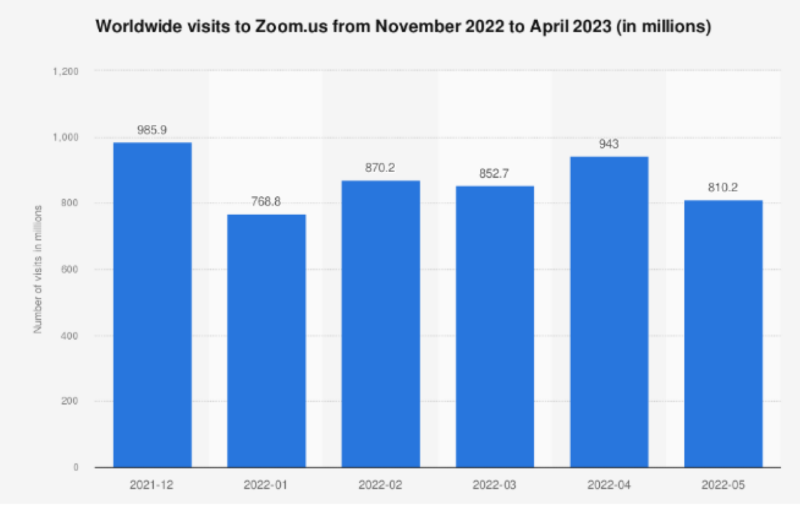
Table of Contents
Automation is stealing the spotlight, weaving seamlessly into our lives for enhanced productivity and a greener future. Renewable Energy Sources, from electric cars to smart grids, signal a pivotal shift towards sustainability. And in a digital twist, say goodbye to boardroom meetings as Transformation to Digital Communication takes center stage, reducing carbon footprints and boosting efficiency.
Join the ride as we step into 2024, where cutting-edge tech promises a world that's not just smarter but more sustainable, efficient, and interconnected. Ready for the future? Buckle up!
The world of technology is constantly evolving. With each passing year, we witness groundbreaking advancements that reshape our lives and the way we interact with the world around us. With that in mind, let's dive into the top 5 innovative sustainable technology trends that are expected to dominate in 2024.
Generative Artificial Intelligence
In recent years, generative Artificial Intelligence, notably Chatbots like ChatGPT and BingAI has seen rapid advancements in functionality and is expected to dominate the market in 2024.

Source: Google Trends
These AI chatbots are trained on a vast amount of text data, including books, articles, news stories, and more. This means that it has the ability to understand more complex and nuanced language than previous chatbots or conversational AI models using natural language processing and sophisticated machine learning algorithms to understand context.
One of the hallmarks of generative AI's ascendancy is its industrialization across diverse sectors. The versatility of these AI models is evident in their application in areas ranging from business to healthcare. In the business realm, generative AI facilitates a myriad of tasks, including email management, research, content creation, and data analysis. Its ability to optimize processes, increase efficiency, and reduce costs positions it as a valuable asset for businesses seeking to harness the power of AI for operational excellence.
In healthcare, generative AI is proving to be a transformative force. From assisting in medical research to aiding in the creation of content for healthcare communication, AI is contributing to advancements that have the potential to revolutionize patient care. The ability of generative AI to understand complex medical literature and assist in data analysis accelerates the pace of research, offering valuable insights that can drive medical breakthroughs.
In conclusion, generative Artificial Intelligence, exemplified by advanced chatbots like ChatGPT and BingAI, is ushering in a new era of human-machine collaboration. The rapid advancements in functionality, driven by breakthroughs in natural language processing and machine learning, position generative AI as a transformative force across industries. Its anticipated dominance in 2024 signifies not just a technological trend but a fundamental shift in how we interact with and leverage AI, setting the stage for a future where intelligent machines seamlessly integrate into the fabric of our daily lives.
Related Article: Top 6 AI & Machine Learning Strategies for SaaS in 2024
Conversational Artificial Intelligence through Virtual Agents
In addition to Siri and Alexa, there has been a more prominent stance of virtual agents within businesses, that are programmed by Conservational AI, to perform simple secretarial tasks. This serves as a valuable form of customer service that might have otherwise required outsourcing. They can learn from past interactions, understand user needs, and provide immediate responses to common customer queries 24/7. This is usually accessible through the company website, allowing the user to interact with an AI assistant.
Noteworthy examples of virtual AI-powered assistants include those developed by tech giants like Apple, communication providers like Rogers, and tech innovators such as IBM. These virtual agents not only enhance customer engagement but also contribute to operational efficiency, streamlining tasks that would otherwise demand significant
human resources. The adaptability of Conversational AI in creating intelligent virtual agents underscores its potential to revolutionize customer interactions across diverse industries, marking a paradigm shift in how businesses manage and deliver their services. As we progress into an era increasingly defined by artificial intelligence, the prevalence and capabilities of virtual agents underscore the transformative impact of Conversational AI on the landscape of customer service and engagement.

Source: Roger’s Virtual Assistant
This is Roger’s virtual AI that helps answer users’ questions and complete tasks such as making a payment.
Furthermore, Gartner predicts that the use of virtual AI within companies will rise significantly. By 2024, it's projected that 40% of these will use this technology, up from less than 5% in 2020.
Increased Use of Automation
Automation, the use of technology to streamline tasks with minimal human intervention, has seamlessly become part of our daily routines—unlocking phones through facial recognition, instructing virtual assistants, or experiencing self-checkout at grocery stores. This integration is not just about convenience; it signifies a strategic move towards enhancing productivity and fostering sustainability across sectors.
In 2024, reliance on automation is on the rise due to technological advancements. This trend is driven by the unique ability of automation to adapt processes in real-time based on data. For example, in smart buildings, automated systems adjust lighting and climate
control based on occupancy, optimizing energy use and improving user comfort. This adaptability aligns with the push for environmentally conscious practices.
Another area witnessing significant automation growth is self-driving cars. Beyond hands-free convenience, autonomous vehicles have the potential to minimize traffic congestion, lower fuel consumption, and enhance overall transportation sustainability. Automated systems in these vehicles navigate roads with precision, contributing to a safer and more eco-friendly mode of transport.
Additionally, automation continues to reshape various sectors, such as automated warehouses and fulfillment centers. In the realm of e-commerce and logistics, companies are increasingly turning to automated systems to enhance the efficiency of their operations.
In these automated warehouses, robots and autonomous vehicles collaborate seamlessly to manage tasks such as inventory retrieval and order fulfillment. Automated guided vehicles (AGVs) navigate through the warehouse, transporting goods from one location to another. (Source: Automation) This not only expedites the process but also minimizes the need for human labour in routine, repetitive tasks.

Moreover, the integration of robotic arms for packing and sorting further streamlines the fulfillment process. These robots, equipped with advanced computer vision and gripping mechanisms, can accurately identify and handle various items, significantly reducing the time required to prepare orders for shipping.
In summary, automation's impact on our daily lives and industries is set to grow even more in 2024. Thanks to new technologies, we're increasingly relying on automation not just for convenience but to boost productivity and be more eco-friendly. This shift reflects a smart move toward using technology to work better and take care of our environment. As we move forward, expect to see even more ways automation simplifies tasks, making our lives more efficient and sustainable.
Renewable Energy sources
In the coming years, there has been more of a trend to use more sustainable, eco-friendly technology to better the environment, such as electric cars, flexible batteries, and smart grids.
Electric cars, with their zero-emission capabilities, are becoming increasingly prevalent, addressing concerns about air pollution and reliance on fossil fuels.

Source: EV-Volumes
Flexible batteries are emerging as a key innovation, providing energy storage solutions that are adaptable to various applications, from wearables to electric vehicles.
Smart grids represent a transformative development in electricity networks. Leveraging digital technologies, sensors, and sophisticated software, these grids optimize the matching of electricity supply and demand in real-time. This real-time adaptation not only enhances efficiency but also contributes to the reliability of the electrical infrastructure. Cybersecurity measures embedded in smart grids ensure the integrity of the system, protecting it from potential threats. The integration of data analytics for fault detection minimizes downtime and transmission losses, further elevating the overall reliability of this innovative technology.
In essence, the trend towards renewable energy sources is not merely a fleeting movement; it is a pivotal shift towards a more sustainable and environmentally conscious future. The combined impact of electric cars, flexible batteries, and smart grids showcases the transformative potential of embracing eco-friendly technologies. As these innovations continue to evolve, their collective contribution becomes increasingly instrumental in mitigating the environmental challenges we face, paving the way for a more sustainable and resilient world.
Related Article: 5 Ways to Optimize Your Days in 2024 with ChatGPT
Transformation to digital communication
Gartner predicts that in 2024, only 25% of business meetings will occur in person. This is compared to 60% before the pandemic. This signifies an accelerated adoption of digital collaboration tools. This transition has been accelerated by the global challenges posed by the pandemic, pushing businesses to embrace digital platforms for communication and collaboration. Virtual meetings, video conferencing, and collaborative software have become integral components of the modern business communication landscape.

Source:Statista
The shift to digital communication is not just a reaction to immediate challenges but a deliberate step towards broader environmental sustainability. With a significant decrease in physical travel for meetings, businesses are actively reducing carbon emissions, aligning with climate change mitigation efforts. This move addresses the environmental impact of business travel, especially air travel and commuting, offering a more eco-friendly approach to conducting business.
Additionally, the adoption of digital collaboration tools enhances operational efficiency. Virtual meetings and collaborative platforms facilitate seamless communication, overcoming geographical constraints. In a globalized business landscape, where teams, clients, and partners are dispersed across regions and time zones, this capability is crucial. Connecting globally without the need for physical presence not only streamlines communication but also fosters a more diverse and interconnected business ecosystem.
As we move towards 2024, the predicted decline in in-person meetings reflects a long-term commitment to the digital transformation of business communication. The lessons learned during the pandemic have accelerated the adoption of digital collaboration tools, shaping a future where virtual communication is not just a contingency plan but an integral part of the business strategy.
Conclusion
Technology trends poised to shape 2024, focusing on sustainable innovations. As we step into 2024, these trends not only reflect the cutting edge of technological evolution but also signify a collective commitment to a more sustainable, efficient, and interconnected future.